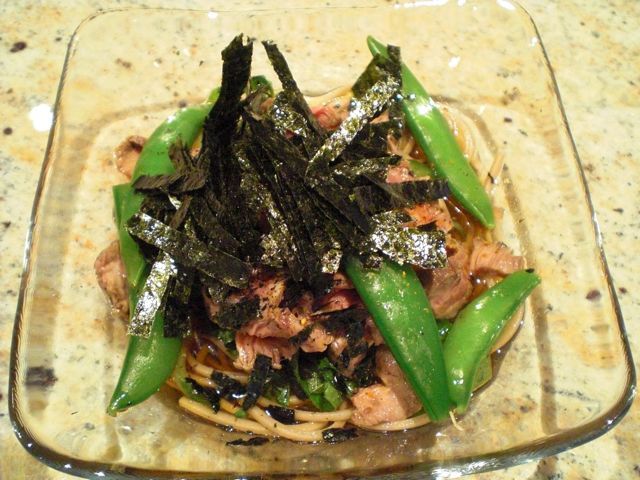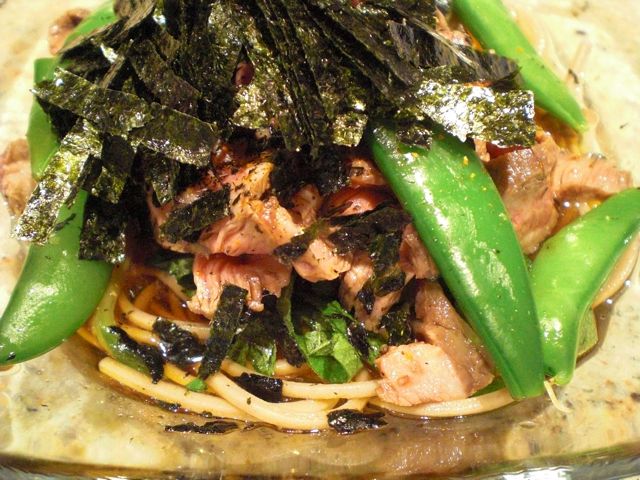This is not really a "dish" but nice small drinking snack or even a small "shime" 締め ending dish. This also was leftover control. There is no recipe but this is how I put it together,


The amount is for two small servings. I had leftover flat iron steak which I used for several other dishes. I thinly sliced across that grain (4-5 slices per serving). I then marinated it with a small amount of concentrated (x2) bottled Japanese noodle sauce called "mentsuyu" 麺つゆ from the bottle without diluting. Of course, you could make your own.
This is a very decent dish. We really liked this type of soba noodle. It has nice firm texture but not too brittle. For my usual instant preparation, this is indeed in keeping with the spirit of Izakaya food.
I cooked half a serving of dried soba noodles. The one I had was called "yamaimo-iri" meaning containing mountain yam as a binder. This soba was nicely firm after cooking as per package instruction. I threw in sugar snaps (hand full, may be 10) toward the end of cooking the soba. I had to fish them out and put them in cold water before the soba finished cooking. If you time it correctly, you could drain the sugar snaps together with the soba. I washed the soba in cold running water.
I placed the soba noodle in the bottom of a small bowl, placed the steak slices, sprinkled Japanese 7 flavored red pepper flakes 七味唐辛子 on the top, and garnished with sugar snaps, chiffonade of perilla, and nori. Other garnish choices may include scallion and dried bonito flakes.
For sauce, I simply diluted "mentsuyu" and poured it over from around the sides (not too much).



